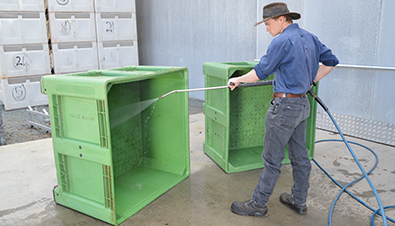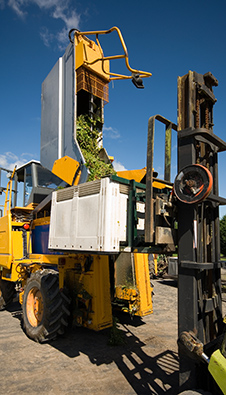Read the latest information on
Foot-and-mouth disease
 A requirement for people sending machinery and equipment into or through South Australia is that it must be clean and free of plant residues and soil on arrival at the border.
A requirement for people sending machinery and equipment into or through South Australia is that it must be clean and free of plant residues and soil on arrival at the border.
Used machinery and equipment entering SA should be accompanied by either a Plant Health Certificate or a Plant Health Assurance Certificate (eg SA ICA 54).
As of 15 June 2020, any used horticultural equipment not accompanied by the correct biosecurity documentation will be quarantined at the state border.
The requirements must be met if machinery or equipment has been used in association with produce susceptible to the following pests:
 More information about the produce susceptible to fruit flies and other regulated pests is available in the Plant Quarantine Standard South Australia.
More information about the produce susceptible to fruit flies and other regulated pests is available in the Plant Quarantine Standard South Australia.
The requirement for this type of equipment to be certified was added to Condition 27 in the South Australian Plant Quarantine Standard version 16.1a, effective 6 January 2020.
An amnesty period giving people time to adapt to the change is now over, and all non-certified loads arriving at the state border will be placed under quarantine and directed to be held until either certification can be provided, or until the loads can be inspected (at the cost of the importer) and found free of any plant material or soil.
Biosecurity SA’s Chief Inspector Biosecurity Notice
Plant Quarantine Standard South Australia (which provides the entry requirements for fruit, vegetables, plants, and plant related products into South Australia)
Version 16.1a, 6 January 2020
Version 17, 21 July 2020
SA ICA 54 – Inspection of Used Vehicles and Associated Equipment
Moving plant goods interstate (Australian Interstate Quarantine)